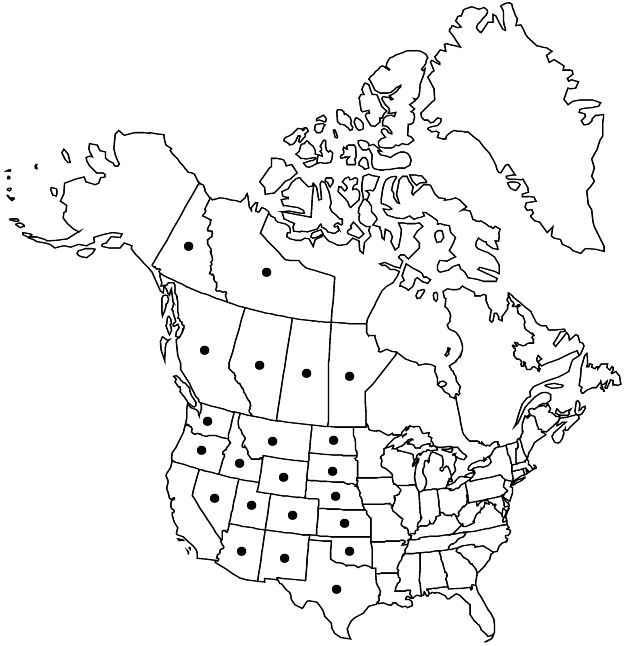Difference between revisions of "Comandra umbellata subsp. pallida"
Mem. Torrey Bot. Club 22(1): 70. 1965.
FNA>Volume Importer |
imported>Volume Importer |
||
| (6 intermediate revisions by 2 users not shown) | |||
| Line 7: | Line 7: | ||
|year=1965 | |year=1965 | ||
}} | }} | ||
| − | |basionyms={{Treatment/ID/ | + | |basionyms={{Treatment/ID/Basionym |
|name=Comandra pallida | |name=Comandra pallida | ||
| − | |authority=A. de Candolle in A. P. de Candolle and A. L. P. P. de Candolle | + | |authority=A. de Candolle |
| + | |rank=species | ||
| + | |publication_title=in A. P. de Candolle and A. L. P. P. de Candolle, Prodr. | ||
| + | |publication_place=14: 636. 1857 | ||
}} | }} | ||
|synonyms={{Treatment/ID/Synonym | |synonyms={{Treatment/ID/Synonym | ||
|name=C. umbellata var. pallida | |name=C. umbellata var. pallida | ||
|authority=(A. de Candolle) M. E. Jones | |authority=(A. de Candolle) M. E. Jones | ||
| + | |rank=variety | ||
}} | }} | ||
|hierarchy=Comandraceae;Comandra;Comandra umbellata;Comandra umbellata subsp. pallida | |hierarchy=Comandraceae;Comandra;Comandra umbellata;Comandra umbellata subsp. pallida | ||
| Line 29: | Line 33: | ||
|elevation=150–2800 m. | |elevation=150–2800 m. | ||
|distribution=Alta.;B.C.;Man.;N.W.T.;Sask.;Yukon;Ariz.;Colo.;Idaho;Kans.;Mont.;Nebr.;Nev.;N.Mex.;N.Dak.;Okla.;Oreg.;S.Dak.;Tex.;Utah;Wash.;Wyo.;Mexico (Chihuahua;Coahuila). | |distribution=Alta.;B.C.;Man.;N.W.T.;Sask.;Yukon;Ariz.;Colo.;Idaho;Kans.;Mont.;Nebr.;Nev.;N.Mex.;N.Dak.;Okla.;Oreg.;S.Dak.;Tex.;Utah;Wash.;Wyo.;Mexico (Chihuahua;Coahuila). | ||
| − | |discussion=<p>As with the other subspecies, subsp. pallida is morphologically variable, this likely related to its diverse ecological habitats. Clinal variation and intergradation with the other subspecies that flank its eastern and western boundaries may also play a role (M. A. Piehl 1965). Intermediates between subsp. pallida and subsp. californica occur in Arizona, New Mexico, Nevada, Oregon, and Washington. Ecotypic variation apparently has a genetic component, as demonstrated by common garden experiments with seeds and vegetative propagules (Piehl). One extreme but widespread form is highly branched basally and has dimorphic leaves, with the proximal blades linear and the distal blades lanceolate or elliptic.</p> | + | |discussion=<p>As with the other subspecies, <i></i>subsp.<i> pallida</i> is morphologically variable, this likely related to its diverse ecological habitats. Clinal variation and intergradation with the other subspecies that flank its eastern and western boundaries may also play a role (M. A. Piehl 1965). Intermediates between <i></i>subsp.<i> pallida</i> and <i></i>subsp.<i> californica</i> occur in Arizona, New Mexico, <i>Nevada</i>, Oregon, and Washington. Ecotypic variation apparently has a genetic component, as demonstrated by common garden experiments with seeds and vegetative propagules (Piehl). One extreme but widespread form is highly branched basally and has dimorphic leaves, with the proximal blades linear and the distal blades lanceolate or elliptic.</p> |
|tables= | |tables= | ||
|references= | |references= | ||
| Line 38: | Line 42: | ||
-->{{#Taxon: | -->{{#Taxon: | ||
name=Comandra umbellata subsp. pallida | name=Comandra umbellata subsp. pallida | ||
| − | |||
|authority=(A. de Candolle) Piehl | |authority=(A. de Candolle) Piehl | ||
|rank=subspecies | |rank=subspecies | ||
| Line 53: | Line 56: | ||
|publication year=1965 | |publication year=1965 | ||
|special status= | |special status= | ||
| − | |source xml=https:// | + | |source xml=https://bitbucket.org/aafc-mbb/fna-data-curation/src/2e0870ddd59836b60bcf96646a41e87ea5a5943a/coarse_grained_fna_xml/V12/V12_749.xml |
|genus=Comandra | |genus=Comandra | ||
|species=Comandra umbellata | |species=Comandra umbellata | ||
Latest revision as of 19:17, 5 November 2020
Herbs, 5–33 cm. Rhizomes: cortex blue, drying blackish. Aerial stems often much branched; proximal portions not overwintering. Leaves: blade green to grayish green, glaucous, linear to lanceolate, elliptic, or ovate, 0.9–4.2 cm, thick, firm, becoming ± succulent, base attenuate to cuneate, margins not revolute, apex attenuate to acute, often mucronulate or apiculate; midrib obscure or sometimes conspicuous or protruding on abaxial surface, lateral veins obscure. Pedicels 0–1.6 mm. Flowers funnel-shaped to rotate; petals oblong to lanceolate-oblong, 2.5–5 mm; anthers 0.7 mm. Pseudodrupes purplish brown to red, glaucous, subglobose to ovate, 5.5–9 mm, slightly roughened. 2n = 52.
Phenology: Flowering Mar–Jul.
Habitat: Open areas, sandy and rocky slopes, sagebrush communities, coniferous and deciduous forests, deserts.
Elevation: 150–2800 m.
Distribution

Alta., B.C., Man., N.W.T., Sask., Yukon, Ariz., Colo., Idaho, Kans., Mont., Nebr., Nev., N.Mex., N.Dak., Okla., Oreg., S.Dak., Tex., Utah, Wash., Wyo., Mexico (Chihuahua, Coahuila).
Discussion
As with the other subspecies, subsp. pallida is morphologically variable, this likely related to its diverse ecological habitats. Clinal variation and intergradation with the other subspecies that flank its eastern and western boundaries may also play a role (M. A. Piehl 1965). Intermediates between subsp. pallida and subsp. californica occur in Arizona, New Mexico, Nevada, Oregon, and Washington. Ecotypic variation apparently has a genetic component, as demonstrated by common garden experiments with seeds and vegetative propagules (Piehl). One extreme but widespread form is highly branched basally and has dimorphic leaves, with the proximal blades linear and the distal blades lanceolate or elliptic.
Selected References
None.